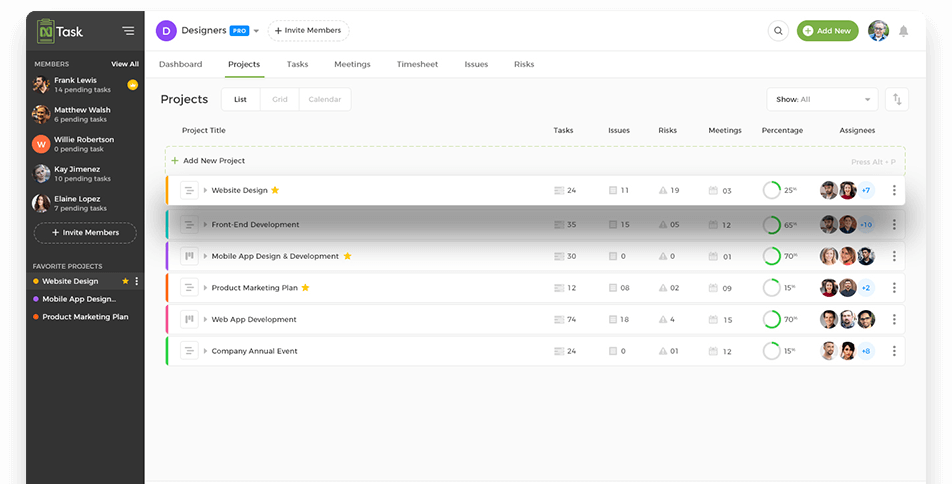Optimizing progress and making the most of your resources is a constant struggle. Businesses are always looking for ways to perfect their strategic planning in order to increase their chances of success.
Hoshin Kanri is one such method that helps businesses with efficient strategic planning and the alignment of strategic goals throughout the organization. In this post, we will explore the ins and outs of the Japanese method, how it is implemented and the benefits it brings to an organization.
What is Hoshin Kanri Method?
Hoshin is Japanese for ‘direction’ and Kanri means ‘management’, interpreted as the management of objectives. The method is an effective way of driving progress. It eliminates the risk of poor communication and makes sure that the progress is heading in the right direction.
The method ensures that the goals set by the company are driving progress. It connects company-wide goals with specific projects the resources are working on. It makes sure that individual progress aligns with the goals set by the company.
With the Hoshin Kari method, companies aim to create a plan that will help with the accomplishment of company-wide goals via efficient management of the organization. The goals are shared from the top to the bottom while the results are shared from the bottom to the top, simultaneously.
With progress focused on the right direction, companies optimize individual as well as collective performance for better results. The use of the method aligns strategies put forth by the organization with the tactics and operations, making sure that each and every tier of the company is connected, and the information flow is uninterrupted with the help of smooth communication.
Hoshin Kanri Catchball – The Flow of Feedback:
Hoshin Kanri is not a one-way method. As mentioned earlier, it requires efforts from both sides for it to be successful. The manager, as well as the employee, have to agree on the goals. The discussion brings clarity and makes the process impeccable.
If an organization forgoes feedback from the people working on the project, then it can have a negative impact on the employee’s motivation and could result in errors. The feedback obtained from resources can help weed potential risks and issues that otherwise might crop up.
Hoshin Kanri Catchball is a two-way feedback loop focused on continuous planning and improvement. Here’s how it works:
- Top management communicates the strategic goals to the middle managers who then deliberate on the goals using their own expertise and the data obtained from reports
- Middle managers then identify tactics that can help with the successful achievement of those goals and then communicate them to their teams
- The employees share their operational insights with the middle managers in an attempt to refine the process and make it near-perfect
The active exchange of feedback and open communication throughout the organization eliminates potential risks or threats that might otherwise result from rifts in communication.
Hoshin Kanri Matrix
Hoshin Kanri matrix, also called X matrix, is a spreadsheet template, a visual projection of the planning process. The matric helps companies analyze the goals and objectives and how they are connected within the wide spectrum. The matrix shows which resources are working on what task, how different goals and strategies are connected, and how everything pans out in terms of the big picture.
There are four quadrants of the matrix:
- Improvement initiatives – North
- Improvement targets – East
- Strategic objectives – South
- Annual objective – West
The boxes at each corner of the matrix can be check-marked to represent dependencies linked with different activities. A separate section of the matrix allows you to see the resources assigned to different tasks.
To read the Hoshin Kanri Matrix, one should start from the very bottom and then move clockwise, piecing everything together. The matrix helps analyze how different goals are connected to one another and which resources are working on the completion of these goals. The visual representation of the planning process smoothens any wrinkles that might otherwise become a hurdle in the implementation of the process.
Also, see:
How to Use the Risk Assessment Matrix in Project Management?
7-Step Implementation of Hoshin Kanri Method

Implementation of the method in a company is a 7-step process. Here’s a summary of what happens at every step of the way:
Step 1 – Identify and Define the Vision of Your Organization:
Clarity of organizational goals, mission, and objectives is the first step in any planning process and the same goes for Hoshin Kanri. From the very get-go, identify and define the vision statement of your organization and make sure it is linked with the long-term goals your company wishes to achieve.
Every action, every activity that goes on in the organization should push the organizational goals towards completion. Every individual working in the company should have a clear understanding of what these goals entail and how they are going to contribute to them.
This step of the process sets a big picture, helping you streamline your work and setting a clear direction from the very start.
Step 2 – Develop Breakthrough Objectives:
Breakthrough objectives refer to a set of changes necessary for the fulfillment of the organizational vision set in the first step. Breakthrough objectives form the pillars of the organization and usually span three to five years. They highlight the future path for the organization and are crucial for the realization of the organizational vision.
To make sure that you accomplish these goals, keep the numbers down to about three or four. A larger sum will take away the focus of individuals and will make it difficult to achieve a single goal.
Examples of breakthrough objectives include entering a new market, launching new products, expanding the company’s reach to global markets, etc.
Once you have identified these objectives, you can place them at the very bottom (south) of your Hoshin Kanri matrix.
Step 3 – Define Annual Objectives:
The next step in the implementation of the Hoshin Kanri method is the development of annual objectives. Essentially, you have to break down the breakthrough objectives into smaller, easily manageable chunks. For example, if your strategic goal is the enter a new market then market research could be one of your annual objectives.
Set SMART goals in this step of the process which entails that these goals are specific, measurable, achievable, realistic, and time-bound. At this step, you can set your eyes on 10 or so goals. Also, keep in mind that annual goals do not necessarily have to be yearly goals, you can also go for quarterly or monthly goals.
Another important point to remember is that you have to set KPIs i.e., Key Performance Indicators against which you will measure the success of your performance.
On the Hoshin Kanri Matrix, Annual objectives occupy the left or west section of the spreadsheet.
Step 4 – Cascade Annual Objectives Throughout the Organization Via Catchball:
Using the Hoshin Kanri Catchball, the objectives are trickled down from the top management to the employees. The annual objectives, for better execution, are divided into even smaller goals which are then assigned to relevant teams and departments.
The division of each goal narrows it down and makes it more specific. All the goals are thus streamlined and contribute to the completion of strategic objectives in the larger context.
The breakdown of these goals helps align goals throughout the organization and makes sure that all the resources are working towards the accomplishment of the bigger, organization-wide goals.
At this step, teams will understand their contribution to the process and will have a clearer vision of their role and responsibilities in the process. The two-way process involves the cascading of objectives and goals from the top to the bottom and feedback from the bottom to the top.
This step occupies the top (north) quadrant of the matric.
Step 5 – Implement Annual Objectives:
While the previous three steps focused on planning, this step is all about putting those plans into action. This is where you execute your planning and implement annual objectives. Since you will have already divided the objectives into smaller pieces, teams will have no trouble accomplishing those goals.
Remember, different teams will employ different strategies, KPIs, etc. to monitor their progress but the ultimate destination will be the completion of strategic goals.
Different companies use different methods for the implementation of annual objectives, some of the most common methods used are the SCORE methodology, Kaizen method, DMAIC, or the PDCA cycle. Once you implement the goals, you will start receiving feedback from the bottom which will help refine the process for better results.
Step 6 – Monthly Reviews:
How will you identify if you are making progress? what if your performance remains stagnant? How will you identify and analyze the dips in your performance? The best way to go about these questions is to conduct reviews every month.
The reviews will help you identify if everyone is working for the accomplishment of the same goals and will help you monitor the performance of the employees. A bottom-to-top approach works well in this step wherein teams monitor their progress and assess their performance over time.
These reviews also inculcate accountability and responsibility in the employees and help with the identification of gaps in your performance. Once you have identified the errors, you can devise strategies to correct your performance or improve it further.

A project management tool, like nTask, can make this step a walk in the park for you. It allows you to create projects, and divide projects into tasks and subtasks. You can then assign these tasks to relevant resources and monitor their performance over time. you can keep an eye on their performance from day to day and receive reminders, notifications, etc. that keep you updated and informed.
Step 7 – Conduct Annual Reviews:
While monthly reviews help you improve your day-to-day performance and analyze your progress in the short-term, annual reviews monitor the performance over a year. The annual review helps you look back at the organization’s performance in the last 12 months.
Were you able to achieve your goals? What were the pitfalls and how can you avoid them in the future? How could you have improved your performance? What were the lessons you learned this year and how will you implement them in the coming year?
Annual reviews give you the answers to each and every one of these questions. It allows you to strategically analyze the efficiency of your planning and execution process. This is where you learn your lessons and improve your performance.
It’s A Wrap!
To make it even easier for yourself, you can use work management tools like nTask that not only help with planning and execution but also help with monitoring and tracking performance.
Hoshin Kanri method is your sure way of aligning goals throughout the organization and optimizing performance for better results. The step-by-step implementation of the method makes the execution much quicker and easier. The two-way feedback also ensures error-free communication and clarity in the vision of the organization. Remember, teams that work together, grow together.

